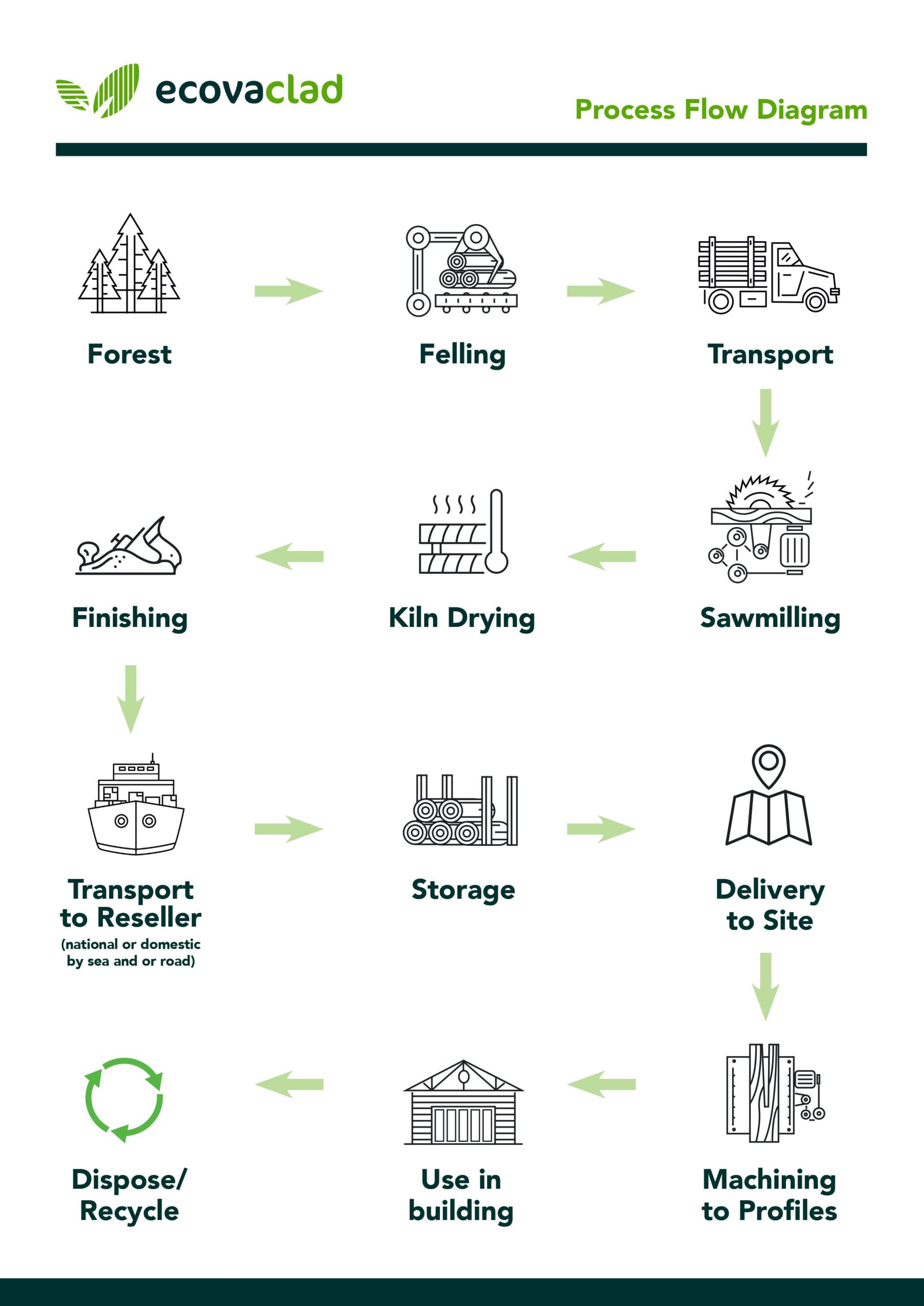Is timber an environmentally friendly solution for building projects?
CO2 emissions from the construction industry and the built environment are a significant contributor to global warming.
Now, governments, building professionals and consumers alike are increasingly looking to minimise carbon emissions in the future design of buildings. Architects and designers are now designing low carbon and net zero (?) carbon buildings using a range of modern techniques and new design philosophies.
To fully consider and explore the environmental benefits of using timber in building projects versus alternative materials, it is imperative to understand the full lifecycle of a building, as well as the materials used in the construction process.
How carbon is taken into account in construction.
Sustainable construction projects consider carbon emissions from the production of the building materials used within the building, the transportation of the materials used, the energy used to construct the building, the amount of waste produced by the construction process, and the full life of the building, including its end-of-life, such as how its materials can be ultimately reused or sustainably disposed of.
There are several eco-friendly building materials that do not adversely affect the planet during their production, unlike heavy building materials like bricks and blocks, concrete, and steel, that are manufactured under carbon intensive processes.
Why choose timber products?
Timber is a good example of a highly renewable eco-friendly building material that is used in construction. Timber also has important natural carbon capture properties and low embodied energy, making it one of the most sustainable building materials available for the life cycle of a building. It also insulates incredibly well, leading to overall energy efficiency gains when the building is in use. Using timber reduces carbon used in construction, both through the carbon captured and stored in the wood, and displacing emissions by avoiding using alternative energy-intensive materials.
As long as the timber industry is sustainable – that is, for each tree cut down for timber, another tree is planted to maintain a balance – then it is actually a useful tool for managing greenhouse gases.
However, while an increased demand for timber is beneficial, if the carbon footprint of timber is larger than the amount of carbon the timber’s forestry is absorbing, the use of timber would not help to reduce carbon emissions.
To fully evaluate how environmentally friendly timber is in reducing carbon emissions, the wider impact of timber’s carbon footprint needs to be considered.
Timber’s carbon footprint
Timber has a relatively small carbon footprint in comparison to other building materials. Its carbon footprint is impacted by growing wood, felling, curing, cutting, and drying, and the transportation of wood from its source.
The growth of timber is positive for the environment and reduces its carbon footprint as during its life it is actually absorbing CO2. Felling, curing, cutting, and drying timber all require very little energy, with only very basic equipment required, which leaves transportation as the main source of timber’s carbon footprint.
The emissions from transporting timber are made up of direct and indirect emissions. Direct emissions include the fuel used by road and sea transportation, while indirect emissions relate to other elements including factors such as the manufacture and maintenance of transportation vehicles.
Fuel usage is the biggest output of greenhouses gases, contributing to over 50%of timber’s greenhouse gas emissions, with the rest resulting from the manufacture and maintenance of vehicles (road and sea) used to transport the wood from source, and from the construction and maintenance of roads.
Is timber an environmentally friendly solution for building projects?
Timber is one of the most environmentally friendly building materials available for use in the construction of buildings. However, it is not entirely environmentally friendly due to the embodied energy created in processing, production, and transport.
Timber serves as an excellent replacement for more energy-intensive materials such as concrete or steel, resulting in a significant reduction in greenhouse gas emissions within the construction industry.
The use of timber has never been truly carbon neutral… until now…
Ecova Clad – The only truly carbon neutral timber cladding solution
Ecova Clad goes beyond the carbon neutral benefits of wood by offsetting all related carbon emissions – the only timber cladding solution to do this.
We buy from fully sustainable sources, through FSC and PEFC chain of custody certification. Solar power runs the Ecova Clad mill and we invest in lower emission side loaders for transportation whilst also insisting on low emission delivery vehicles. In addition to operating as sustainably as possible, Ecova Clad offset the embodied carbon produced in the lifecycle of our products through investments in environmental schemes around the world.



